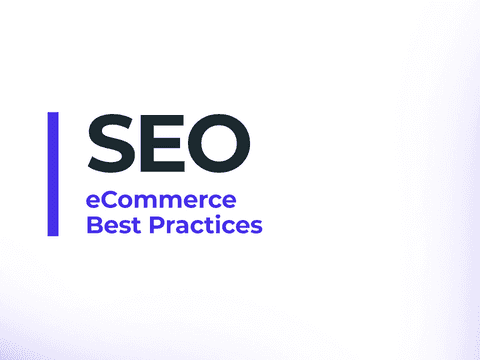Creating a digital content strategy is a decision many eCommerce businesses make every day. It adds value to the customer experience and converts content into a sales and marketing channel. This is one of the most effective ways to attract potential customers and engage with buyers. But, what exactly does this term mean?
What is a digital content strategy?
A digital content strategy determines the direction a company wants to go with respect to branding and how their content connects with customers.
Planning a digital content strategy helps companies set goals and objectives for the near and long-term future, sheds light on the company’s current strengths, weaknesses, opportunities, and threats, and connects customers with the brand, creating more engagement and a sense of community.
The strategy chosen for content creation will define the steps to follow and their level of priority. A blog, a YouTube channel, building an online presence on Instagram or Tik Tok, or optimizing your website for a better user experience (and improved SEO) are just a few examples of what is included in a digital content strategy.
6 Ways to create a digital content strategy
1. Define your strategy, understand the market & your customers
Before you start creating content online, there are a series of elements that should be defined. For instance, you need to decide whether you will create eCommerce content that ranks organically, if you’ll opt for promoted content only, or if you want to combine both options.
In order to succeed with your content marketing ideas, you’ll first need to study the market to recognize:
- Market gaps that should be addressed in your content (if you are going to fill these gaps)
- Direct and indirect competitors and their current marketing & branding strategies. In other words, how are they selling themselves?
- Your buyer persona(s). Content actions should be created with the customer in mind. Having a deep understanding of how your customer behaves, their needs and preferences, demographic information, and which platforms they use to communicate is the bare minimum you can do to guarantee the success of your content
- The publication frequency. It can vary depending on the channel, but establishing the perfect tempo for content publication is one of the first steps before starting your digital content strategy
After compiling all this information, you’ll be able to better understand your strengths and weaknesses, and what can be used as a competitive advantage.
For instance, you can make content focused on valuable knowledge — such as tips or recipes — the center of your content strategy, or opt to create entertaining content. It doesn’t need to revolve around your products. Use your blog, videos, and ads to highlight the benefitsof your brand and products.
2. Make SEO-friendly content: Google has to like you
SEO is an essential part of any digital marketing strategy. These days, if you don’t appear on the first page when a user makes a search in Google, you don’t exist. This is why using Google’s algorithm in your favour is vital to attracting customers to your online store organically.
There are several actions that need to be implemented in order to rank well. However, SEO strategies should be more than keywords, search volume, and competition. You can’t forget for whom you are writing: your customers.

For instance, if we talk about an eCommerce website, the SEO strategy should have the user experience (UX) at the center of it in order to maximize sales. This applies to both “technical SEO” (such as optimized URLs, loading speed, responsiveness, and architecture) and other types of actions, like the use of the right keywords, link-building actions, or obtaining backlinks organically.
In other words, you need to deliver what the buyers expect to find. This means including those keywords on your product pages, home, and even on banners! Finding the right keywords for your eCommerce content strategy should be a relatively simple task. Use an SEO tool like Ahrefs or Semrush to find eCommerce-related keywords and those keywords that can boost the visibility of your online store.
Google will consider every piece of content to decide how SEO-oriented your online store is.
3. Optimize your website
Improving your website content can have many benefits for the purchasing experience of customers and for the position your online store achieves on the search engine results page (SERP). Some of the actions that can improve your website are:
- Adapting it to be mobile-responsive
- Speeding up its loading time by compressing images and building strong cache logic
- Optimizing the checkout page to offer all the options the buyer expects to find and making it SSL secure
For some of these changes, you may need people with certain skills and expertise, such as content specialists, technical SEO experts, and developers. The benefits of optimizing your website content are immense and can truly set you aside from your competitors thanks to a better user experience and the help of Google’s algorithm.
4. eCommerce video content: We are in the era of video
In conjunction with website and search engine optimization, you can create eCommerce video content. This may be a better strategy for certain businesses, like those related to food or exercise.
You can create and share recipes or fitness routines and use them as a natural way to promote your eCommerce store and products. This idea could be taken as far as creating a cooking show, a training course, or a webinar on YouTube.
To create eCommerce video content, you’ll need certain resources. This is why, generally speaking, this type of content is only used by eCommerce businesses with the size, means, and time needed to invest in the creation of professional video content.

However, video content can be shot and edited to be used on other platforms like Facebook, Instagram, and TikTok with simple changes such as adapting the size format and tone (by deleting some parts of the video or adding dynamic elements like polls, emojis, or links). You can also use this video content to create ads for social media and Google.
With the recent update of YouTube, you can share products using the social commerce features. Users can discover products and be directly sent to the checkout page of your online store.
If you also decide to work with influencers, the content they create can be shared across multiple platforms to cater to different audiences and obtain good ROAS out of that campaign.
5. eCommerce content strategy: Words mean something!
Because the world isn’t what it used to be, written content doesn’t need to be old-fashioned blog posts. If your eCommerce store allows you to do so, create a blog, but don’t limit yourself to that!
Creating ebooks and other downloadable content, podcasts, and social media copy is also part of a written content strategy.
Although your audience may be looking for education or entertainment, they may not have a high purchase intention. On the other hand, it’s also possible that the targeted audience doesn’t want to consume any content, but only to acquire a product.
You can opt to target one of these groups, or create different content strategies to target both intentions and make the most out of your content strategy.
Written content is part of your blog, social media, landing pages, and email marketing (the next strategy we’re talking about).
6. Email marketing: Yes, that’s also content!
Email marketing is a common practice in the online business world. However, creating newsletters and personalized emails isn’t an easy task.
First of all, you’ll need to gather email addresses and customer information. Then, you’ll need to implement processes to edit, store, and use this data in a way that helps you create personalized emails based on the purchasing history of a customer, their problems and needs, which product pages they visited, etc.
With access to this information, you can decide which kind of email marketing campaigns you want to create and the angle you will use in the eCommerce content strategy regarding emails.
Generally speaking, online stores send emails to recover abandoned shopping carts, promote new launches and restocked items, or provide additional information about a visited product page.
Creating automated notification emails with remarketing actions is quick & easy with Outvio.
Outvio is the post-checkout infrastructure designed for online stores that have their customers at the center of their business strategy.
You can choose at which points in the sales funnel you want your customers to receive a fully personalized and automated email, or create your own trigger to inform customers about delays, arrival of parcels, or rescheduled deliveries.
Outvio helps you create automatic notification emails and measure open rates to understand their performance and find possible points of improvement
Summary
Creating a digital content strategy is simply a logical step if you want to build a solid presence online. Your website, social media platforms, ads, and email marketing actions are just the starting point in your content strategy journey.
Curate and perfect your eCommerce content strategy by keeping an eye on metrics and fix possible flaws to increase customer acquisition and retention, while lowering marketing costs with efficiency.
If you want to fully harness all the potential of your eCommerce business, start using Outvio today to streamline all your post-checkout operations.




